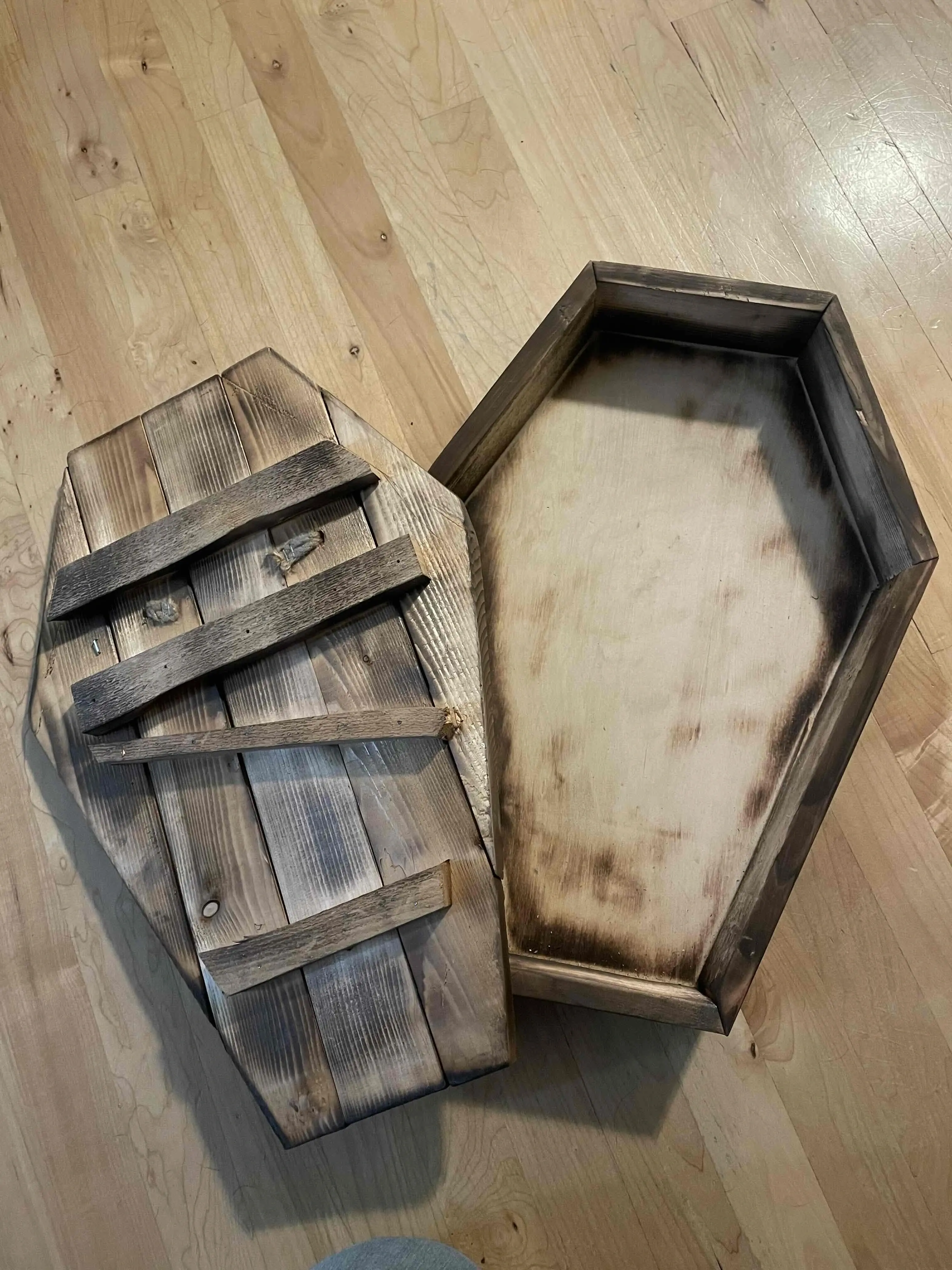Until now, I’ve never seen anything with epoxy that I found visually impressive. And you went all the way to stunning!
jadero
Just a Southern Saskatchewan retiree looking for a place to keep up with stuff.
- 1 Post
- 29 Comments

 3·6 months ago
3·6 months agoYes, it was very badly constructed. I had to read it a couple of times to decode it, and I have the advantage of having graded essays :)

 1·6 months ago
1·6 months agoThat would have been awesome, but I suspect that it was just the arms and that it was powered in some way, hence “pendulum-like”.

 2·6 months ago
2·6 months agoGauges measured stress on the metacarpals during punches and slaps on padded-dumbbell targets created with a pendulum-like device.
I take “a pendulum-like device” to mean they suspended either the arms or the targets and swung them to a collision.

 3·6 months ago
3·6 months agoGauges measured stress on the metacarpals during punches and slaps on padded-dumbbell targets created with a pendulum-like device.
I take “a pendulum-like device” to mean they suspended either the arms or the targets and swung them to a collision.

 21·6 months ago
21·6 months agoOh that’s not good. Obviously, I’ve chosen to allow js, but basic stuff should work without it.

 62·6 months ago
62·6 months agoHeh. I gave up trying to figure out voting a long time ago. I find it both fascinating and disturbing that there are people out there who see anything I write as worthy of a dowvote. :)

 213·6 months ago
213·6 months agoAnyone who hasn’t followed that link needs to do so now! It’s got human cadaver arms manipulated with fishing line and guitar tuning knobs. It’s got a link to an article titled “Your Face: Punching Bag or Spandrel?”
You can’t possibly find a better way to spend 10 minutes!

 10·6 months ago
10·6 months agoSame with my dad. He said that the military liked red/green colour blindness for spotting camouflaged stuff.

 4·7 months ago
4·7 months agoLooks like it still has rubber tires, so probably just fine.
I can see why! That’s beautiful!

 3·7 months ago
3·7 months agoAnd if you tape it into the corner of your combination square:
- the rule part of the square keeps the reference faces aligned vertically
- the nail can’t tip toward one board, causing vertical misalignment
- consistent centering (or off-centering, if that’s what you want)
- I find it’s easier to position the rule on my layout markings than to position a handheld nail. There is a slight offset, of course, but if that’s a consideration, do your layout to compensate.
- I find it’s quicker, too.
If you are doing floating tenons, just mark the ends. If your tenons need to be vertical with respect to your reference face, use a long nail or screw, mark the tops, adjust the height, mark the bottoms.
If you can tolerate more offset or are willing to always layout to compensate, drive a woodscrew vertically in a long narrow block with only 2 square faces. Adjust the screw depth as appropriate. The block gives you something to hang onto without taping anything.
And now I bet you’re envisioning the construction of your own dedicated jigs made from scraps and wood or drywall screws.
@MaggiWuerze@feddit.de
Ok, good luck!
If you have to move it, try to not put it back where you started. We did a temporary install with ours while we built the addition where it was going to be permanently installed. That was enough for us to realize that we didn’t want to move it again before it was time to take it to the scrapyard, so we installed it with enough clearance to be able to work on it. (Although it’s getting harder as I get older and less flexible!)
I don’t know what model of Harmon you have, but changing the igniter on ours (PC-45) was pretty easy.
We’re in Saskatchewan. There is an amazing dealer in Yorkton who mails out any parts we need and who offers lots of really great usage and troubleshooting advice. It’s not like having a local dealer who will come out for service, but it’s better than nothing. Country Hearth & Comfort
If you find you’re going through igniters, you might have a weak air pump. Insufficient flow during the ignition cycle can cause slow ignition. That means the igniter is running longer than it should, reducing it’s life.

 1·10 months ago
1·10 months agoEven with proper dust collection, I’d rather just wear PPE. At this point, I view having good dust collection as more of a time saver for cleaning than actual protection.
That’s pretty close to my own view. I’ve moved the tough to manage stuff outside and leave the easy to manage stuff inside. I still wear PPE in both cases, because that is the simplest, cheapest, and, most importantly, reliably does the job.
Some of my equipment pretty much has to be outside anyway, because my shop is just too small for both boat building and a bunch of dust makers.
I’m also doing more of my work with just hand tools. I find it pleasurable and being just a hobby, it’s not like there are any time pressures. And now I’m retired, so I’ve got even more time.

 5·10 months ago
5·10 months ago+1 for Windsor. I don’t know what they’re like out there or how they compare to other options you have, but they are my go to place in SK. Whenever we travel to Saskatoon for appointments, etc, I try to stop in, if only to marvel at the selection.
They are beautiful in themselves, with a kind of delicacy of form. I’ve tracked down places to purchase them. They’re not as expensive as I imagined, so I’ve added them to my Xmas and birthday lists. :)
Thanks.
What the hell are those clamps? Did you make them yourself? I’ve never seen anything like them. I probably won’t buy or build them, but they do look cool!

 1·10 months ago
1·10 months agoHa! Fair enough. I really don’t have a good idea what the real risk is for a reasonably cautious hobbyist. For me, it was trying to address the dust hazard that made me realize just what a pain dust has been for me. The shop is so much easier to keep clean. My bright finishes come out so much better. It’s just all over nicer.
(Wall of text warning!)
When I decided to turn occasionally working with wood, mostly outside, into more of a regular activity in my retirement that would be mostly inside I did a bit of research and concluded that dust was the probably the biggest unaddressed hazard in most hobby shops. We all know to not stick our fingers into the blades and to not breathe the fumes from most finishes, but dust is generally treated as an annoyance rather than a hazard.
So, when I was building my shop, I put dust control at the top of my list. It quickly became clear that I couldn’t afford to handle dust the way I wanted and still have tools and equipment and lumber, so I figured out how to work around the problem. That’s when I decided to go with a shopvac with a HEPA filter and a cyclonic add-on and to build an outdoor workstation for the worst of the power equipment.
Those cyclonic add-ons to a shopvac are an amazing convenience. If you have a HEPA filter, opening up the intake to the shop air after finishing with the tool and directing the vac output out to the room for good circulation will clear virtually all remaining hanging dust in just a few minutes. If you have the space and a bit of spare cash, a box fan running in an enclosure of good furnace filters mostly takes care of hanging dust as you’re working. Those techniques might not meet OHSA, but it’ll be darn close, especially given you’re probably not producing dust 40 hours a week, 50 weeks a year. Slap on a decent mask for a few minutes and that will get you to OHSA, so that’s what I do.
As I said up top, I don’t actually know that dust collection needs to get OHSA levels to manage the risk associated with a hobby shop, but it’s the route I took. Not knowing means I also don’t criticize the choices others make. I’m just happy to see that most people are creating much safer environments by doing something more than opening a window, even if they’re doing it for reasons of convenience, not safety.

They’re called “dessert forks” in the same way that some people call the small spoons “dessert spoons”.